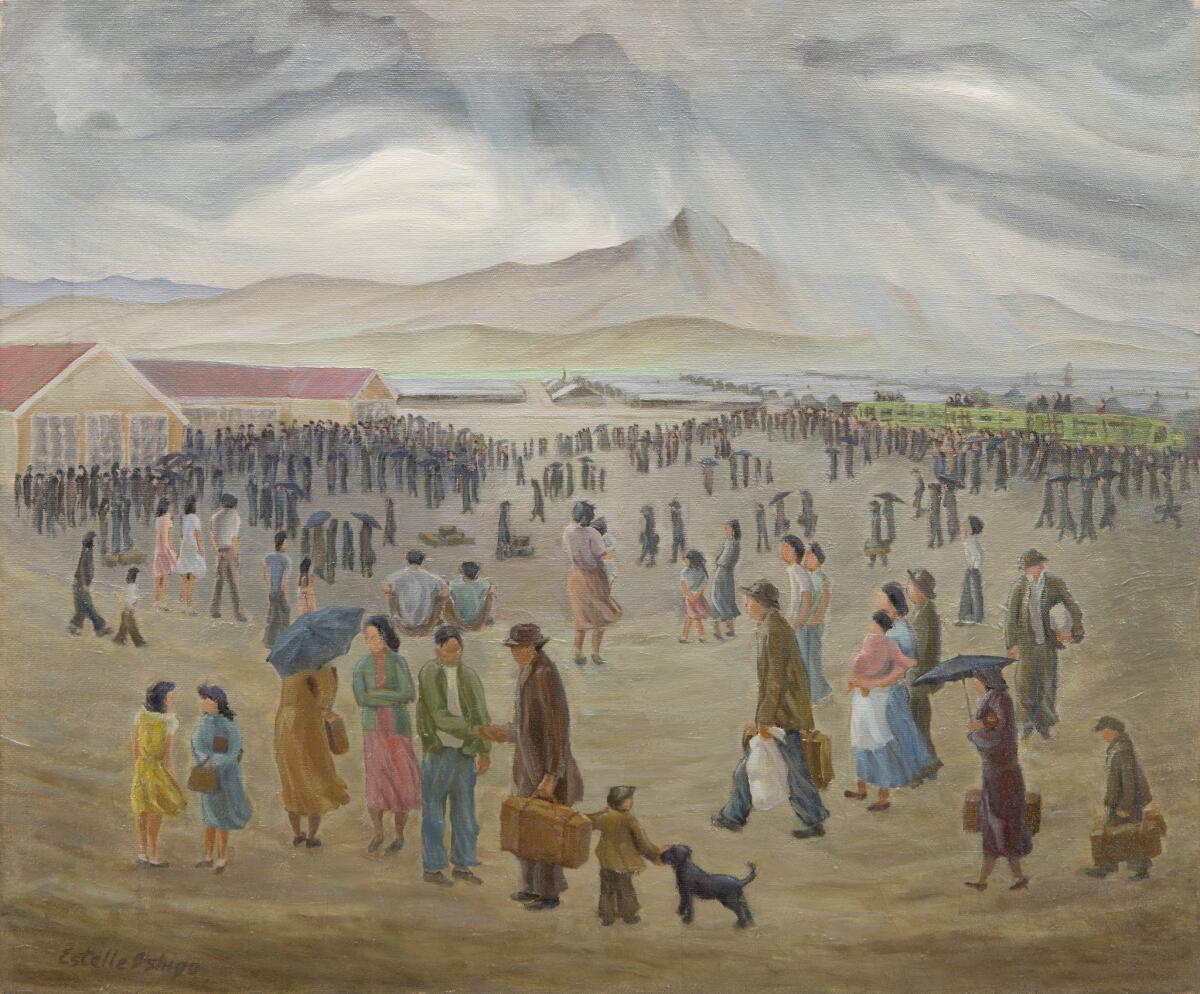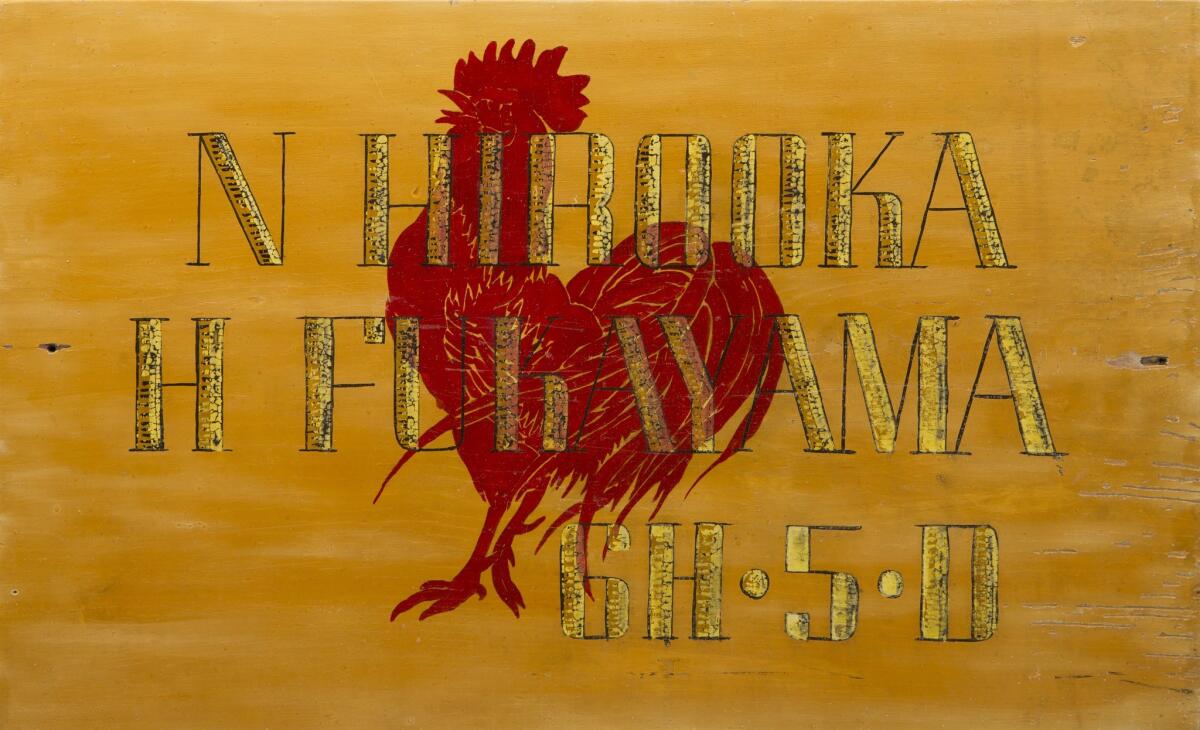Contested art and artifacts from Japanese American internment camps go on view
A collection of artworks and other artifacts from Japanese American internment camps made headlines in spring 2015 when protesters successfully steered these pieces of American history away from the auction block, where they could have fallen into private hands. The protesters’ goal: Put the pieces on public exhibition instead.
Mission accomplished. On Sunday, every item in the collection (or digital representations of them) will go on view at the Japanese American National Museum’s Hirasaki National Resource Center in Los Angeles. Titled “Contested Histories: Art and Artifacts from the Allen Hendershott Eaton Collection,” the exhibition includes more than 450 paintings, photographs, sculptures, pieces of jewelry and other objects made by hand in camps where about 120,000 people of Japanese descent were incarcerated during World War II.
Watercolor and oil paintings depict life behind barbed wire. Black-and-white photographs of residents are complemented by hand-carved wood sculptures and furniture that residents made.
One oil painting by Estelle Peck Ishigo depicts families arriving at the camp in Heart Mountain, Wyo., toting luggage and huddled together as they brace against desert winds. In another, a bucolic scene of swimmers yields to the ominous rows of barracks in the distance. Also on view: painted nameplates representing the families imprisoned inside.
The original collector of these items was the author of the 1952 book "Beauty Behind Barbed Wire: The Arts of the Japanese in Our War Relocation Camps." (Former First Lady Eleanor Roosevelt wrote the foreword.) Many of the objects were given to Eaton by detainees with the expectation that they would be used for educational purposes.
The museum intends to present “Contested Histories” as something of a research project, inviting camp survivors, family members and others to identify people in photographs and share information about objects in the collection. After the exhibition closes in L.A.on April 8, it will travel to as-yet-undisclosed locations in the U.S.


Follow me on Twitter: @debvankin
FROM THE ARCHIVES
Japanese Americans' protests halt auction of internment camp items
George Takei helps L.A. museum acquire internment camp artifacts
Bruce Kaji dies at 91; Japanese American National Museum founder and Little Tokyo pioneer
The biggest entertainment stories
Get our big stories about Hollywood, film, television, music, arts, culture and more right in your inbox as soon as they publish.
You may occasionally receive promotional content from the Los Angeles Times.








